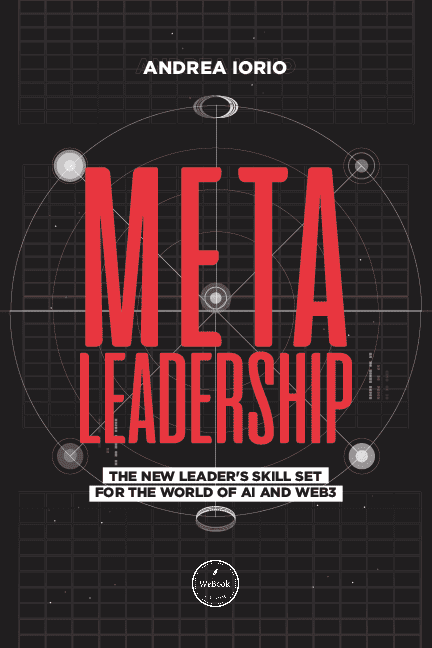Let's begin by considering the areas where AI impacts the customer or consumer of your product or service. Think carefully: how does AI affect your relationship with them?
Well, to start, it impacts the experience we provide, how we attract them, how we educate them, and ultimately how we can learn about their behavior through data. And if this works for the customers of our business, why shouldn't it work similarly for our internal customer, our employees?
The truth is, it works in much the same way - and these are the areas of AI's impact on HR (Human Resources) that we will discuss in this article. Let's delve deep into the topic of how AI can transform people management in a company, based on insights from Ian Bailie, a British HR influencer, and founder of the reference portal, myHRfuture.com. Listen to his thoughts in the video below, and don't forget to activate YouTube subtitles if needed:
“So let’s now take a look at the impact of AI on HR. And there’s 4 areas where we are really seeing this technology take hold: the first is not surprisingly around experience. As we have just seen with the consumer experience, we can translate some of that into the employee and the candidate experience, around how we can use AI to really improve the personalization and the recommendations that both your employees and your candidates are receiving. The second is around recruitment. With something like recruitment, there are many different touch points in the process, where we can use technology or something like AI to improve things. It could be around selection or assessment, or using a chatbot to really better engage with the candidate. The third is around Learning and Development. Similar to the Netflix example, if we’re consuming content on a regular basis, then we can see platforms learn about our preferences, and the types of content we would like to see. And again we can create that type of personalized recommendation. And then the last is people analytics: with all this data that we’re generating, on a daily basis, through using these new platforms, we can start to do much more advanced analytics of that data and really start to be more predictive”.
I was recently reading the book "Leadership by Algorithm" by Professor David de Cremer, the founder and director of the Centre on AI Technology for Humankind at the National University of Singapore Business School. It's an incredible book that I highly recommend. In it, the author discusses how AI seems intelligent in different ways than humans are intelligent. He's not a computer scientist; his background is in behavioral economics (much like mine). But he noticed that the integration of social sciences, humanities, and artificial intelligence wasn't getting as much attention as it should. Artificial intelligence is intended to create value for a society populated by humans; end users must always be humans. This means that AI must act, think, read, and produce results in a social context.
AI is particularly good at repetitive and routine tasks and at thinking systematically and consistently. This implies that tasks and jobs most likely to be replaced by AI are hard skills rather than soft skills. In a way, this observation corresponds to what is called the Moravec's paradox: what is easy for humans is hard for AI, and what is hard for humans seems quite easy for AI.
The truth is that, from a people and people management perspective, algorithms will be our greatest allies. An algorithm is a model that makes data intelligent, which means it helps us recognize trends happening in the world around us, captured through our data collection. When properly analyzed, data can tell us how to better and more efficiently manage our environment.
Many business leaders struggle to justify why they should use AI. They are grappling with understanding what AI can bring to their companies. Today, most of them are influenced by research showing that as a company, you should adopt AI because everyone else is doing it. But how this can benefit your own company is often less understood.
Every company has unique data. You must work with it in terms of shaping your strategy and the value your company can and wants to create. To achieve this, you also need to understand the values that define your company and differentiate it from competitors. We are not doing a good job of training our business leaders to think this way. Instead of making them think they should become programmers themselves, they should focus on becoming slightly more tech-savvy so they can align their business strategy, according to their values, in an environment where technology is part of the business process.
This implies that our business leaders understand exactly what an algorithm does, but also its limits, potential, and especially where in the company's decision-making chain AI can be used to promote productivity and efficiency. For this, we need leaders with enough technical knowledge to optimize their broad understanding of business processes to maximize the efficiency of the company and society. That's where I see a weakness for many business leaders today.
Undoubtedly, AI will become the new coworker. It will be important for us to decide at which point in the business process cycle we automate, where we can remove humans from the loop, and where we definitely keep humans in the loop to ensure that automation and AI usage do not lead to a work culture where people feel they are being supervised by a machine or treated like robots. We must be sensitive to these issues. Leaders build cultures, and in doing so, they communicate and represent the values and norms that the company uses to decide how work needs to be done to create business value.
Because of all this, in addition to leadership, AI has a massive impact.
You see, as organizations increasingly transition to artificial intelligence (AI), HR and change management professionals, or change management as they are also called, know they need to adapt to the modern challenges AI presents. This undoubtedly includes programs to help organizations transition to AI use: changing roles and functions, creating an appealing vision for AI, understanding cultural change; and, even more existentially, how humans in the workplace interact with AI.
We've seen that there's no way around it, but it's crucial not only to adopt cutting-edge technologies like AI but also to ensure that people adopt it and don't feel threatened by it.
There was a great quote at the Web Summit in Rio de Janeiro, which I recently covered at the invitation of EDP, a global energy company and leader in the energy transition, from Sarah Al Hussaini, co-founder and COO of Ultimate, in her words, "Generative AI, where to after the hype." She said: "It's so important that we don't have headlines that foster fear, like 'AI is coming to take your job,' because that will only create fear and slow down innovation. We need real-life, honest, pragmatic, and potentially boring stories about how this has been implemented and what jobs are like with AI."
It's true: we need to convey the message that it won't be Artificial Intelligence replacing our jobs, but rather other humans using AI, and therefore the choice is ours whether we want to embrace it or not.
I have been heavily invested in learning and enhancing HR strategies using Chat GPT, an AI language model. As HR professionals and change management experts, we should be excited about using AI, and we should start now. Here are some reasons why:
- Developing a compelling vision for change: AI-based tools can help leaders develop scenarios that explore different possibilities and outcomes, in an unrestricted and unlimited way. The vision can also be informed by different variables, such as employee engagement and market trends. This can help leaders develop a change vision that is flexible and adaptable to their unique circumstances and desired end state. Think about how AI can work with HR data to understand the collective sentiment of the company - something we humans wouldn't have the capacity to do on such a large scale.
- To help communicate the change vision: AI-driven virtual reality can create a 3D or Virtual Reality visualization of the change vision that employees can experience and interact with. This can help employees better understand the change vision and become more engaged and motivated to achieve it. Not to mention the rapid development of training, information packages, and personalized communications that are at the heart of effective change management programs.
- To help us identify potential areas of resistance or concern: AI-powered chatbots and sentiment analysis can help us understand how employees feel about the change vision and identify possible areas of resistance or concern. By analyzing employee feedback and comments, we can address potential concerns or objections before they become obstacles to change. Remember the part above where I mentioned data?
- To help us generate new ideas for managing change: Language models like Chat GPT can generate suggestions for companies to develop their own change management strategies. This can help us develop new and innovative ways of managing change that are tailored to the unique needs of our organization, which we might not have thought of before.









